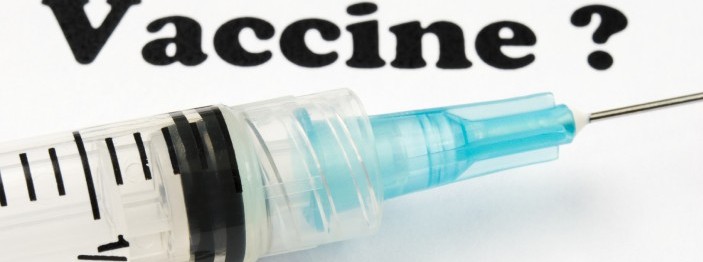Will there be a vaccine for multiple sclerosis?
Shortly after World War II, Soviet scientists reported that they’d discovered a virus that caused multiple sclerosis (MS) and had developed a vaccine to treat it (Margulis and colleagues. J Neurol Neurosurg Psychiatry 1946;9:63). The first person to receive the vaccine appeared to do well and was discharged from hospital. The second person died.
Word spread throughout the MS community – then as now – and people with MS began to ask their doctors if the vaccine was available. If not, could they get it shipped from the Soviet Union? Inquiries were made and the Soviet authorities agreed to a John Le Carre-like exchange. Great Britain would get the MS vaccine, and Russia would get Great Britain’s diphtheria and whooping cough vaccines (Br Med Journal 1958;1:821-822).
The Margulis-Shubladze vaccine, named after two of the Soviet researchers, was a bust. An analysis of the virus found that it was indistinguishable from rabies. This disappointing news was confirmed by Dr. Albert Sabin, himself a Russian emigrant who was fresh off his success developing an oral vaccine for polio. Shubladze had to admit that she had treated MS with rabies and that “reinvestigations” were needed (Shubladze & Dick. Br Med J 1958;2:215).
The MS vaccine may have been a failure, but the idea that viruses are important in MS has never gone away. Indeed, interferons were initially studied as an MS treatment because they targeted viruses that were thought to be the underlying cause. Shubladze herself would continue to investigate rabies-like viruses in shrews, bats and guinea pigs until the late 1970s and was one of the first to investigate combining vaccines with interferons (Barinskii and colleagues. Vopr Virusol 1979;3:262-267). Even now, one of the animal models to study MS (called Theiler’s murine encephalomyelitis virus, or TMEV) works off the assumption that a virus is responsible for demyelination. (The other animal model, called EAE, assumes that MS is autoimmune in nature.)
But developing a therapeutic vaccine for MS has always been stymied by one key problem. If a virus causes (or contributes to) MS, which one is it? Until you know that, it’s hard to hit the target. With the right viral antigen (which stimulates an antibody response), a vaccine could then induce the immune system to attack this MS trigger. It’s an attractive idea, although it does involve a risk. Much of the virus theory of MS depends on the concept of “molecular mimicry”, i.e. that a viral component resembles a component of myelin, so that after the immune system has learned to recognize the virus, it then mistakes myelin as the target and attacks it. So there’s a chance that a vaccine made from a viral antigen could make things worse.
One way around this problem is to develop a vaccine that isn’t directed at viruses but instead targets the abnormal immune response in MS. But here again there are many different targets you can choose. Early studies focused on the T cell receptor, which signals for the proliferation of inflammatory T cells (Vandenbark and colleagues. Nat Med 1996;2:1109-1115; Wilson and colleagues. J Neuroimmunol 1997;76:15-28; Gold and colleagues. J Neuroimmunol 1997;76:29-38).
A more recent approach has been to use vaccines to promote immune tolerance rather than an autoimmune response (Kang and colleagues. PLoS One 2012;7:e49994). The recently completed phase II TERMS study used the person’s own T cells, which have been shown to abnormally react to “self” antigens, as the vaccine component (called autologous T cell vaccination). The idea is that by injecting these autoreactive T cells back into the person’s body, the immune system will re-regulate and have a less inflammatory response. Results with this vaccine (called Tovaxin) were published last year (Fox and colleagues. Mult Scler 2012;18:843-852). There didn’t appear to be much benefit with respect to relapses, disability or MRI findings, although people with more active disease showed some small improvements. However, it was difficult to arrive at any conclusions because the study subjects were generally taking an MS medication, which muddied the results.
The manufacturer, Opexa Therapeutics based in Texas, has now joined forces with Merck Serono, the company that makes Rebif (and oral cladribine before that drug was withdrawn) to bring the vaccine to market. The new name for the vaccine is Tcelna (imilecleucel-T). A two-year phase II study, called Abili-T, has been launched in secondary-progressive MS at 22 sites in the U.S. and two in Canada (Ottawa and Montreal). (For a list of the participating centres go to clinicaltrials.gov and search for study NCT01684761). People recruited into the study will receive five injections over the course of six months.
Tcelna has the potential to become the first personalized treatment for MS because the therapy would developed from the person’s own body. This involves taking blood, isolating T cells that react to myelin proteins, irradiating them to make them inactive, then re-injecting them back into the person. The theory is promising but it remains to be seen if this unique approach is effective in slowing the progression of MS.
Share this article
Facebook Twitter pin it! Email
Related Posts
Back





